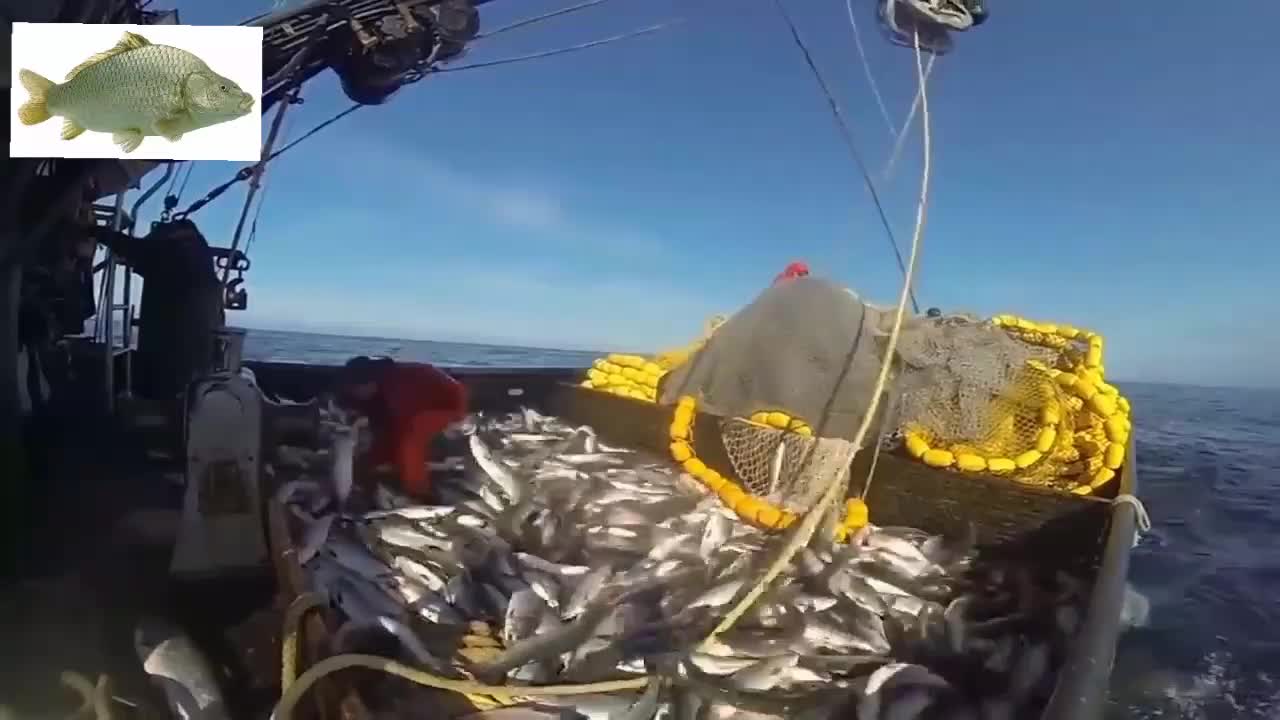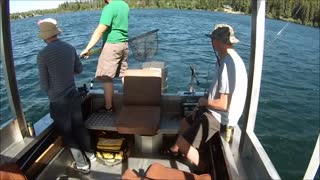Premium Only Content

SEA FISHING SYSTEM
Sea-fishing methods
Pole-and-line fishing
Line fishing at sea is very popular, not only in traditional fisheries with small boats employing a limited number of hooks but also in industrial operations with large vessels or fleets using thousands of hooks.
Pole-and-line methods are used in tropical Pacific and Atlantic waters to catch young bluefin and yellowfin tuna, and smaller tuna species—such as albacore, skipjack, bonito, and little tunny. The pole, generally bamboo, ranges in length from two to 10 metres, with a line of roughly the same length. Hooks of various sizes are barbless to facilitate baiting and removing the captured fish. To hold onto the pole a “rod rest” is generally used, which is made of canvas, leather, or old rubber tires. Depending on the size of the vessel, the crew may number 30 or more. A large crew is needed, since fishing time may be limited and the maximum possible number of rods must be worked. If larger and heavier fishes are sought, two, three, or even four poles may be linked to a single hook. In this case the fishermen must cooperate closely. Also used successfully are deck- and rail-mounted automated fishing poles operated hydraulically and electrically. The fibreglass rods are mechanically moved up and down, swinging the hooked fish onto the deck and removing the hook before swinging it, unbaited, back overboard.
The tuna is attracted and kept near the vessel by chumming, throwing live bait overboard. The bait is kept alive on board in special tanks in which seawater circulates constantly. Bait can be an expensive problem for tuna fishermen; to catch one ton of tuna, roughly 100 kilograms of live bait fish are needed. Sometimes the hooks are baited, sometimes artificial lures are used with hooks hidden in feathers. When the tuna is “hot” (very eager to take the bait), a naked hook is sufficient. Water spraying helps to attract the tuna; it also serves to camouflage the shadows of boat and crew.
Pole-and-line fishing for tuna is done in daytime from slow-moving vessels. Since considerable space is needed for the angling crew to stand side by side on the lee side of the vessel, Japanese vessels for pole-and-line fishing have a long extended bow. To simplify hauling in the catch these boats also have a low freeboard (i.e., their sides ride low above the water). American tuna vessels hang special crew racks outside the ship over the water.
-
 6:01
6:01
CkFishing
4 years agoSea Trout Fishing Sligo
32 -
 3:54
3:54
FlyJam
4 years ago $0.01 earnedKokanne Fishing
32 -
 LIVE
LIVE
Total Horse Channel
14 hours ago2025 Reno Snaffle Bit Futurity | Sunday
47 watching -
 29:18
29:18
ArynneWexler
1 day agoHas The Online Right Lost Its Mind?
1.05K6 -
 23:07
23:07
marcushouse
1 day ago $0.40 earnedSpaceX is Rushing Toward Starship Flight 11 – Already!?
1.54K3 -
 13:52
13:52
True Crime | Unsolved Cases | Mysterious Stories
9 days ago $0.29 earned7 Real Life Heroes Caught on Camera
3121 -
![Welcome to The Finals [OPEN PARTY] - #RumbleGaming](https://1a-1791.com/video/fww1/3e/s8/1/4/H/W/f/4HWfz.0kob.1-small-Welcome-to-The-Finals-OPEN-.jpg) LIVE
LIVE
LumpyPotatoX2
5 hours agoWelcome to The Finals [OPEN PARTY] - #RumbleGaming
958 watching -
 13:05
13:05
Mike Rowe
2 days agoIs College DEAD? Inside America’s #1 Trade School | Sheree Utash From #448 | The Way I Heard It
19.7K7 -
 8:49
8:49
Truly
1 day agoMy Body Feels Like It’s On Fire | BORN DIFFERENT
360 -
 13:43
13:43
The Kevin Trudeau Show Limitless
4 days agoClassified File 3 | Kevin Trudeau EXPOSES Secret Society Brainwave Training
100K20